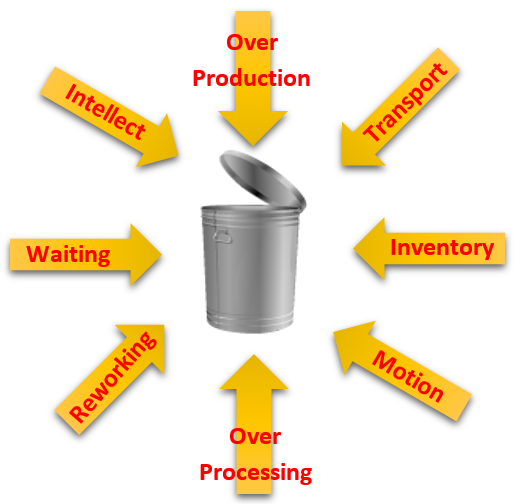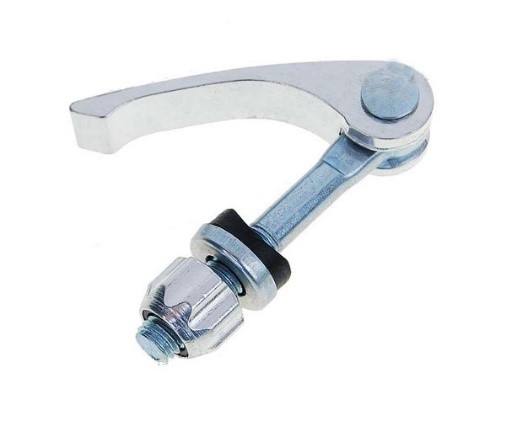TPM and Single-Minute Exchange of Die (SMED)
SMED is an acronym for Single-Minute Exchange of Die, and refers to the theory and techniques for performing set-up operations in less than 10 minutes. To meet customer demand through batch size reduction it is important that the operator’s work to ensure changeover times are reduced and changeover quality improved.
Total Productive Maintenance (TPM) utilizes SMED as a tool to increase the availability factor of Overall Equipment Effectiveness (OEE), although SMED system can be deployed independently it is part of a larger strategy and suite of loss reduction tools that are best aligned with TPM priorities as understood through OEE losses.
Starting a SMED system from the perspective of a TPM culture is about operator involvement in the reduction of waste in the value stream. Becoming more agile as a result, for example – being able to quickly respond to changes in the market and customer orders at short notice. If we over produce to create a buffer to help cope with these changes that’s wasteful and can be seen as the most wasteful of all the 8 lean wastes “Overproduction”.
In addition to overproduction several wastes occur in traditional set-ups:
• Finished parts are transported to storage, or the next batch of parts is brought to the machine after the previous lot is completed and the machine turned off
• Tooling is delivered after the set-up has begun, or a reject part is discovered after mounting tooling and performing test runs
• Jigs, fixtures or tools need replacement due to inadequate accuracy, needed repairs, missing or incompatible parts etc.
Historically the problem of managing set-up time has not been systematically analyzed by engineers and managers, and set-ups have been left to the shop floor to manage.
TPM and Single-Minute Exchange of Die (SMED) – 8 lean wastes
TPM and Single-Minute Exchange of Die (SMED)-
Is overproducing really that bad?
When we overproduce we sink labour, materials, energy and time into units that may sit in a warehouse as working capital. If we use the logic that being lean simply means “reducing the time between receiving an order and getting paid for that order” it’s easy to see why overproduction is not ideal.
When we acknowledge the waste that is overproducing, the goal then is to become more agile so that we can reduce working capital, respond quickly to customer requests and increase available time to produce more units in the same time. This can be simply expressed as trying to minimize the time it takes to complete a change over i.e. last good product at ideal running speed to the next good product at ideal running speed.
TPM and Single-Minute Exchange of Die (SMED) –
Getting started
The SMED system has three essential components:
- A basic way of thinking about production
- A realistic system
- A practical method
A complete understanding of all three facets of SMED will make it possible for virtually anyone to apply the SMED system, with beneficial results in any industrial setting. Even where it may not be possible to achieve the single-minute goal (less than 10 minutes), dramatic reductions in set-up are nearly always possible.
Getting started with SMED is straightforward, usually improvements are low cost no cost and involve operators working together with colleagues to develop standardized activities through a formal project plan, and this ensures the greatest level of success and repeatability. Contrary to the perception the best solutions are not machine redesigns and implementing high tech solutions.
Work flow and workplace management coupled with visual management are the first places to start in any SMED system, there will be a lot of low hanging fruit that can provide you with quick wins.
TPM and Single-Minute Exchange of Die (SMED) –
Project overview
Where changeovers occur in the process firstly we should identify the optimum product family to understand the best place to assign effort then begin to list the internal and external setup conditions, this simply means identifying the actual steps that are currently completed before during and after the changeover event. External steps can only be done while the line is stopped and internal steps are ones that can be completed while the line is running.
Brown paper mapping is a technique for listing the internal and external steps and by adding time-lines to steps it can be understood where time can be saved by moving external activates to internal and to identify other lean wastes as previously mentioned. The analysis of the AS IS state enables the development the future TO BE map, the work then becomes about how to achieve the ideal future state.
To enable the efficient completion of changeovers, some controls should be in place that include – check list to sequence activities – list of tools and settings that may be required. Where tools are required these could be displayed on a shadow boards so missing items can be identified before the changeover begins. In addition it should be ensured that all tools and other changeover related items are functioning and available in advance of their requirement.
Where external setups exist you should analyze these activities for opportunities to move them to internal or to eliminate the adjustment by redesign or planning parallel activities with another operator. Standards related to the activities should be developed so consistent changeovers occur across different shifts and operators, this can be done by writing single point lessons or acceptable photo standards and standard work instructions.
Streamlining the changeover can be continued until single minutes are reached or as close as possible, concentrating on adjustments in the internal set-up can add significant reductions in changeover times through optimized use of fixtures from threads to quick release or other applicable fastening type. In the external setup it would be possible to reduce transportation of tools or dies by modifying the sequence of tool use and the location or sequence of use in relation to the actual mechanical removal or change sequence.
TPM and Single-Minute Exchange of Die (SMED) – quick release fastener
We really hope you have found this article of value and that it has inspired you to learn more about TPM and SMED, just remember the hardest part of any journey is getting started but once begun you will learn it’s an enjoyable and rewarding experience that can improve your organization’s culture and performance in a very positive way.
“TPM and SMED help you operate at your optimum”



